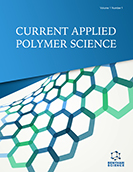Abstract
A microwave-assisted reaction is developed to facilitate the construction of 1,2-dihydro[1,6]naphthyridines from methyl ketones, amines and malononitrile. This one-pot, catalyst-free, solvent-free, pseudo-five-component synthesis of [1,6]naphthyridines involves a sequential Knoevenagel reaction, Michael addition, ring closure and cyclizationaromatization cascades. The advantages of this method lie in its simplicity, cost effectiveness and environmental friendliness. High bond-forming efficiency, good yields and the use of readily available amines make this process convenient for parallel synthesis. Moreover, the versatility of nitrile as functional group is proved since it can be readily transformed into various other functional groups. It is believed that the time saved by implementing microwave strategy is potentially important in traditional organic syntheses and the combination of catalyst-free, solvent-free and microwave heating will be of importance in the search for green laboratory-scale synthesis.
Keywords: Catalyst-free, green synthesis, microwave-assisted, [1, 6]naphthyridines, one-pot, pseudo-five-component, solvent-free.
Graphical Abstract
Current Microwave Chemistry
Title:Microwave Irradiation for Catalyst and Solvent Free Knoevenagel/Michael Addition/Cyclization/Aromatization Cascades
Volume: 1 Issue: 2
Author(s): Paramita Das and Chhanda Mukhopadhyay
Affiliation:
Keywords: Catalyst-free, green synthesis, microwave-assisted, [1, 6]naphthyridines, one-pot, pseudo-five-component, solvent-free.
Abstract: A microwave-assisted reaction is developed to facilitate the construction of 1,2-dihydro[1,6]naphthyridines from methyl ketones, amines and malononitrile. This one-pot, catalyst-free, solvent-free, pseudo-five-component synthesis of [1,6]naphthyridines involves a sequential Knoevenagel reaction, Michael addition, ring closure and cyclizationaromatization cascades. The advantages of this method lie in its simplicity, cost effectiveness and environmental friendliness. High bond-forming efficiency, good yields and the use of readily available amines make this process convenient for parallel synthesis. Moreover, the versatility of nitrile as functional group is proved since it can be readily transformed into various other functional groups. It is believed that the time saved by implementing microwave strategy is potentially important in traditional organic syntheses and the combination of catalyst-free, solvent-free and microwave heating will be of importance in the search for green laboratory-scale synthesis.
Export Options
About this article
Cite this article as:
Das Paramita and Mukhopadhyay Chhanda, Microwave Irradiation for Catalyst and Solvent Free Knoevenagel/Michael Addition/Cyclization/Aromatization Cascades, Current Microwave Chemistry 2014; 1 (2) . https://dx.doi.org/10.2174/2213335601666140610201423
| DOI https://dx.doi.org/10.2174/2213335601666140610201423 |
Print ISSN 2213-3356 |
| Publisher Name Bentham Science Publisher |
Online ISSN 2213-3364 |
 39
39
- Author Guidelines
- Bentham Author Support Services (BASS)
- Graphical Abstracts
- Fabricating and Stating False Information
- Research Misconduct
- Post Publication Discussions and Corrections
- Publishing Ethics and Rectitude
- Increase Visibility of Your Article
- Archiving Policies
- Peer Review Workflow
- Order Your Article Before Print
- Promote Your Article
- Manuscript Transfer Facility
- Editorial Policies
- Allegations from Whistleblowers
- Announcements

























